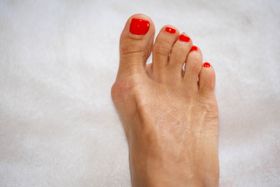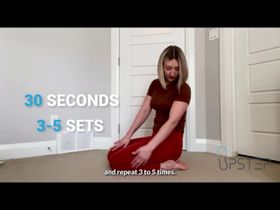Golfer's Knee: How to Prevent and Treat Injuries
Learn about Golfer's Knee, what is it, how you get it, how to prevent it, and what you can do to relieve and treat the condition.
Updated December 4, 2024
While golf may seem like a relatively low-risk sport, there is actually a lot that can go wrong. Golf may look like a low-impact sport, but the sheer force that goes into the swing can easily cause injury, especially to your knees. You don’t even need to be a pro to suffer the risk.
Here is a breakdown of Golfer's Knee and what you can do about it.
How Do You Get Golfer’s Knee?
Some of the causes of Golfer’s Knee are as follows;
- Pre-existing knee condition Playing golf with an existing knee condition (e.g., arthritis) can put significant strain on the joints.
- Soft Tissue Injury The extreme force transmitted through the knee during the swing phase of golfing can tear the ligaments and cartilage and cause general soft tissue injuries.
- Overuse injury Too much stress without adequate rest time can injure your knees.
- Poor body mechanics Not performing the correct technique can place unnecessary strain on the knees.
- Wrong shoes Your footwear needs to be supportive and firm so that your feet don't operate poorly and put unnecessary strain on other parts of your body.
How to Prevent Golfer's Knee
You do not need to have knee pain after golf. Here's how you can avoid it:
- Always warm up your joints before jumping into a game of golf.
- Practice good body mechanics whether you’re swinging, bending to pick up balls, or squatting.
- Make sure to strengthen the muscles of the knee and the core. While the core abdominals are also needed to stabilize the pelvis and aid in the rotational movement during the golf swing, the knee muscles stabilize the knee and prolong the degeneration of the knee joint.
- The use of supplements like glucosamine and chondroitin slow down the degeneration of joints when taken regularly over long periods.
How to Treat Golfer's Knee
Rest, ice, and non-steroidal anti-inflammatory drugs (NSAIDs) are a helpful first line of treatment when injured you have right or left knee pain from golf.
The importance of custom orthotics for athletes can never be overstated, and they can be the solution to your knee pain when golfing. They can help you stand for longer, relieve the excess pressure on your knees by distributing your body weight appropriately, and give your pain an eviction notice.
Related Articles

Common Causes of Burning Heels
Babafemi Adebajo
December 17, 2024

2 Best Tennis Shoe Inserts to Prevent Strain on Your Achilles Tendon
Janik Sundstrom
December 9, 2024

Hallux Rigidus—Common Causes, Symptoms & Treatment
Babafemi Adebajo
December 22, 2022

Healing Your Shins: 7 Effective Exercises for Shin Splints
Babafemi Adebajo
November 14, 2023

When Exactly to Replace Your Orthotics—OTC or Custom
Janik Sundstrom
July 16, 2025
Related Posts
Babafemi Adebajo
Upstep Custom Orthotics for Flat Feet—2025 Review
Staff Writer
Benefits of Orthotics for Basketball Players
Babafemi Adebajo
The Cost of Custom Orthotics: Are They Worth It?
Babafemi Adebajo
Achilles Tendonitis: Symptoms, Causes, Treatments, and More
Staff Writer
Where Can You Buy Custom Orthotics Online?
Janik Sundstrom
Fitness Walking & Hiking Custom Orthotics—2025 Review
Babafemi Adebajo
Knee Pain When Squatting: Causes and How to Fix It
Babafemi Adebajo
Can Orthotics Cause Knee Pain?
Staff Writer



